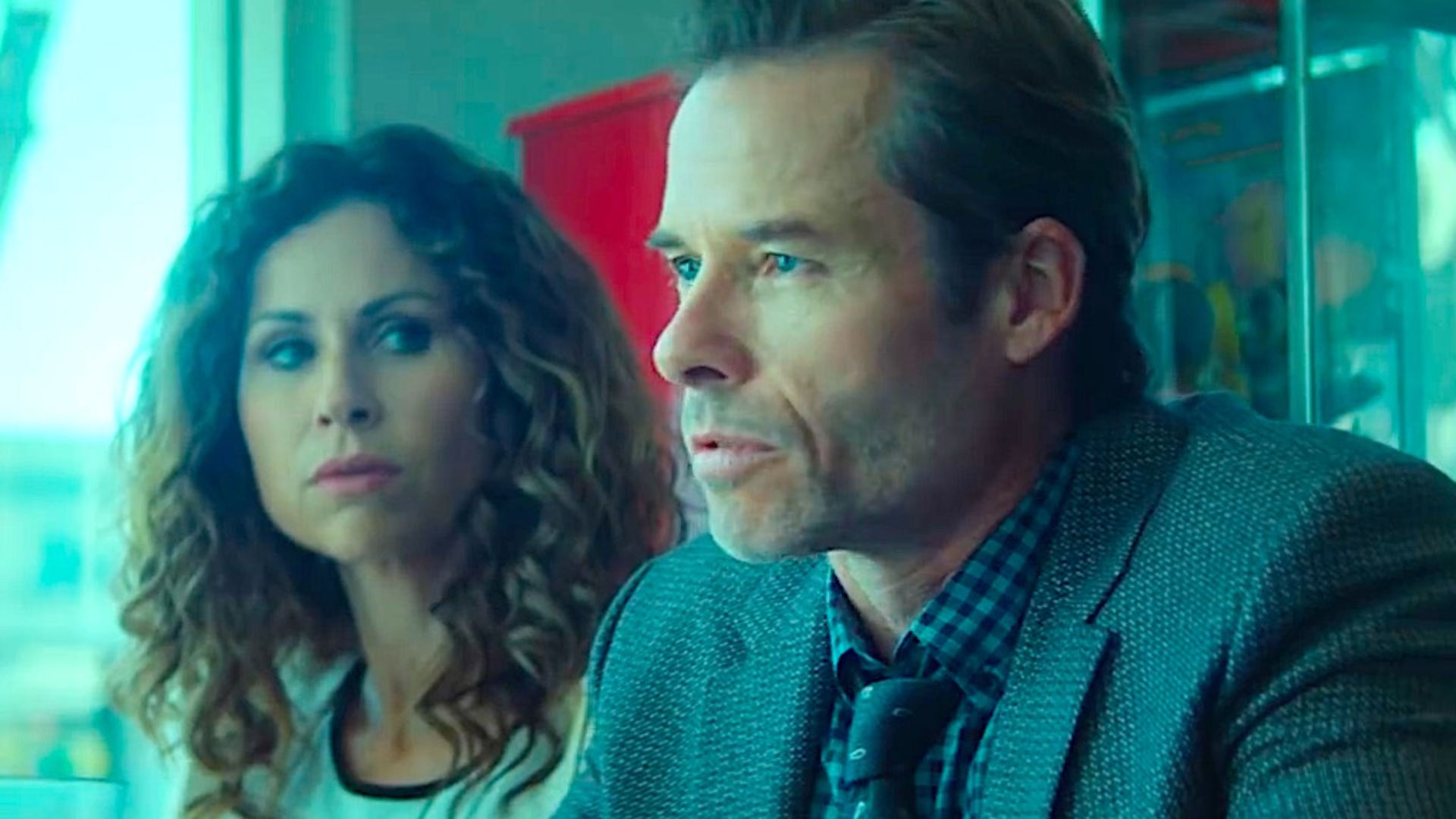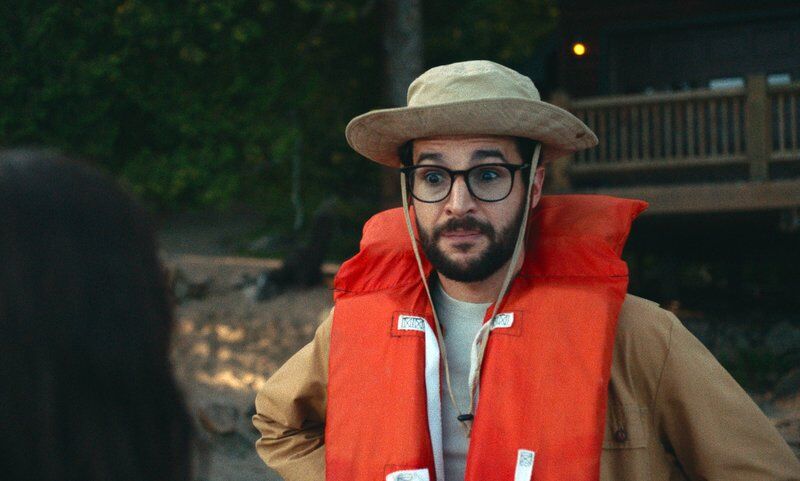Few movies epitomize what we love about Indie Films more clearly than The Spinning Man. If you haven’t seen it yet – you really should. (Here is a fantastic place to pick up a copy of The Spinning Man.) But, better yet, you should head over, and visit George Harrar’s personal website, and pick up a copy of the original idea. I’m about halfway through the book, and am really enjoying it so far. So without further delay – here is the conversation I had with Mr. Harrar about his book, the resulting movie, and the power of ambiguity.
THiNC. – I saw an interview where you talked about the news alert that got you thinking about the story of Spinning Man. Did you ever go back and find out what happened to the missing kid? I know you avoided news alerts to keep your story from getting tainted. But, now I’m all kinds of curious what happened to that original kid. Or heck, give us more details about the story and I’m sure my readers will track it down for you!
George Harrar – In 2000, 16-year-old Molly Bish disappeared from the lake where she was a lifeguard in central Massachusetts, about an hour from where I live. The largest search in the state’s history commenced. A “suspicious” white car was noted in the parking lot by several people, and the police announced they wanted to speak with the male driver. No one came forward. I began thinking of who that person might be and why he might not present himself, even if not guilty. There could be many reasons even an innocent man might not want to be identified. Perhaps he should have been at work, perhaps he saw something but was scared to be involved, perhaps he was simply enjoying the idyllic lake view but realized that sounded suspicious. I avoided any further news coverage because I didn’t want to be exploiting a tragedy and also not to be constricted in developing my plot by what actually happened. Molly’s body was discovered three years later, about five miles from the lake. Several suspects were identified but I don’t believe anyone was arrested.
THiNC. – I’d like to talk more about the ambiguity of the story. Did you go in at the start thinking you’d leave the story open to what might have happened? Or did you arrive there at the end, after you had already written it?
George Harrar – Writers of standard mysteries usually have an ending in mind, a final scene to aim at, and an idea of plot twists along the way. I’m not a mystery writer. I write organically, meaning that I start out with a core idea and a few characters, bring them together and see how they interact. When the writing is going well I’m more of a chronicler of what they say and do in the different scenes, and those interactions push the story forward. I almost never know what’s happening next, so I certainly don’t know the ending until I get there and am forced to make the final decisions. I try to leave myself enough flexibility to go in whatever direction seems natural. I like ambiguity in endings because it leaves the reader a bit unsettled, perhaps even angry at not knowing conclusively the answer to the “Did he do it or not?” question. Ambiguity allows the reader to be more psychologically involved, to bring his or her life experiences to the story, to have an opinion on the matter rather than be told what to think.
THiNC. – That is 100% a position I can get behind. I’ve always said that it’s huge to have faith in your reader, your viewer, and allow them to walk through the story for themselves. To allow them to pick up the pieces, and come to their own informed decisions. And heck, I’m okay angering them a little bit if that is the larger goal! How did you get approached to turn your novel into a film? How did that come to be?
George Harrar – When “The Spinning Man” came out in 2003, it was well-reviewed by the Boston Globe, Washington Post and New York Times. The latter called it “elegant and unnerving,” which is my favorite review of anything I’ve written. Soon after, my agent started fielding calls from the reps of top actors, such as Leonardo DiCaprio, Bruce Willis, George Clooney. They all wanted a copy. I was thrilled. But after they read my novel they realized it was more psychological and philosophical and less action-packed than they wanted. No car chases, explosions, etc. One Hollywood producer, Steve Golin, remained interested. He was familiar with more difficult stories, such as “The Eternal Sunshine of the Spotless Mind” and “Babel.” He optioned the rights for three years, commissioned the screenplay, but failed to get financing. Several years later my book was optioned by a film company in the UK that envisioned a multi-part TV series, but that failed to take off. In 2016 an independent producer, Rob Arnold, said he had just read my novel and wrote to ask if the rights were available. He put together funding based on the original screenplay, and the movie was launched.
THiNC. – And the rest is history! Awesome. What did you think of the film? Did you enjoy it? Were there aspects of the movie that made you think – huh, I didn’t see it like that? Or, were there aspects of the film that were better than your novel?
George Harrar – The film is different from my novel in enough ways that I could almost view it as any other movie, finding things I very much liked (the cast, acting, tone, direction) and things I liked less (the rabbit/mouse story line, the confusing penultimate scene of Evan’s fighting in the car with the student). The screenplay needed some updating. Evan’s asking to use a phone in the bar would only be plausible if it had already been established that he was one of those philosophical guys who disdains using a cell phone. My novel doesn’t graphically describe Evan’s flights of fancy (or flights of sexual encounters) as the movie does, and I think they are well-crafted so as to leave you wondering if they are fantasies, memories or intentions. We all have a tendency to judge movies according to some equal standard of quality. It should be noted that this indie film was made on quite a small budget, and I assume a major part of that was spent on Pierce Brosnan, Minnie Driver and Guy Pearce. With that in mind, I think the movie is quite good.
THiNC. – Your critique of the film feels right on target. I generally adored the movie, and only found minor quibbles with it here and there. Small details that I could easily excuse away considering the size of the budget and the complicated topic. I mean… let’s be super honest here – you are pretty high maintenance! hahah! This source material would be magical in book format, but would leave theater goers struggling. Even some of my more avid readers (so, people that love ambiguity and complexity) even found it challenging. To them I just said… watch it again! Better yet? Go read the source material!!
I think you have said in past interviews that you didn’t have a chance to chat with Simon Kaijser when you visited the set, is that right? So, that makes you a viewer just like us!?!! Just as clueless anyway! In the film version, do you think that Evan did it?
George Harrar – Simon was in working mode the whole time my wife and I visited the set in West LA. He was kind enough to let us look over his shoulder into his viewer to see what the camera was shooting. We saw the outside car washing scene as well as the interior scene with the mouse. The mouse wrangler made sure her charge was well tended to. I spoke briefly to Guy Pearce and Minnie Driver between scenes (Pierce Brosnan had completed his shoot already). She complemented me on the ending of my novel, and I said, “Oh, you read it?” She said “Of course,” which pleased me that she would want to know the source material. I’ll have to go with Detective Malloy’s statement in the movie that Evan couldn’t have killed Joyce, based on evidence at the scene and on her body. I’d say she slipped and fell to her death. Perhaps she was going to meet Evan and he was indeed there, or maybe not. I’ll refrain from expressing my view of the ending of my novel. As I said, it’s up to the reader to decide.
THiNC. – What’s interesting about saying he didn’t do it, is that it is an affirmative statement that forces ambiguity, not clarity. You know? YES HE DIDN’T DO IT only confuses things more. He didn’t do it? Then why did he admit to it? Why was the movie not formed as a sort of Pelican Brief defense case… and not a more, hunt down, of our obvious suspect? You know? And that is what makes the movie so good.
I found that the film (and therefore the book as well) really opened people’s minds to this crazy idea that someone can be innocent, and still admit to doing something they didn’t do. There is a movie that recently came out on Netflix called Unbelievable. Basically in that story, when a teen reports being raped, then recants her story, she becomes completely unbelievable. But then two detectives chase the evidence down – not to spoil it – but apparently she was raped. Some have found this aspect of your story completely jarring as a viewing experience. And yet, it’s real life. I think something like 27% of people interrogated by police admit to a wrongdoing they didn’t do? What was it about this story that you crafted that was so compelling? And what did you find so interesting about the ending?
George Harrar – I did see that movie, “Unbelievable,” and it definitely plays with the notion of the unreliable central character whom you want to believe but can’t quite because she keeps changing her story. In “The Spinning Man” novel and film, Evan maintains his innocence until he wanders into Malloy’s office and confesses. I think he feels guilty of something (partly because of his sketchy past with students, partly because of his recurring sexual fantasies), and so confesses that he killed Joyce. He certainly has lust in his heart, which isn’t a crime, but still…. He also has trouble separating memory from reality. So in this confused emotional and psychological state, with his wife and others questioning him, he takes the simpler way out of confessing. He’s trying to cleanse his mind of his guilty thoughts (and perhaps deeds).
THiNC. – Do you have any insight, or hint, you could offer to viewers that come away from the ending confused? I’ve had several people contact me with, “Wait, WHAT?” sort of responses.
George Harrar – I was confused as well when I first read the screenplay. I asked my wife, “Did he do it or not? I can’t tell.” More accurately, I couldn’t decide what the screenwriter wanted us to think. I think it’s a bit clearer in my novel, but not definitively so. The main sticking point for me and many with the film is that scene in the car I mentioned, where Evan and his student are engaging in some sort of sexual activity and she falls out to the parking lot. She appears to be bleeding and very injured, but then she gets up and walks away. Is this fantasy or memory? When is this scene happening (if it’s happening at all?) I think more clarity around this would have gone a long way to alleviating some of the distress some viewers felt. Never having spoken to the screenwriter, I’m afraid I can’t offer any insight.
THiNC. – Are you working on anything new that THiNC. readers can anticipate? Or where can we go to get your current books? And have you sold the movie rights to anything lately?!? hahaha.
George Harrar – I’m working on a very different novel following the chaotic home life of a boy from age 8 months (when he’s found sitting in the middle of the road at dusk—the scene came to me in a dream) to about 16 years old. “The Spinning Man” is available in paperback as an Amazon reprint with a cover themed to the movie. Another novel of mine from 2013, “Reunion at Red Paint Bay,” premiered as a French-language TV film in Oct. 2019 with the title “Examen de Conscience.” Alas, it’s not available for general viewing. In this adaptation, my small-town Maine setting was replaced by a fancy chalet overlooking the scenic French coast. As so often happens with adaptations, the original novel writer is but a distant memory… More information on my works can be found at www.georgeharrarbooks.com, including some original short stories.
Thanks so much Mr. Harrar for taking the time out to chat with us all at THiNC. Now, if you want to help out – please go snag his book from georgeharrarbooks.com – like he mentioned. Also, please take time out to rate and review The Spinning Man movie over at IMDB.com – or Amazon.com
Edited by: CY



